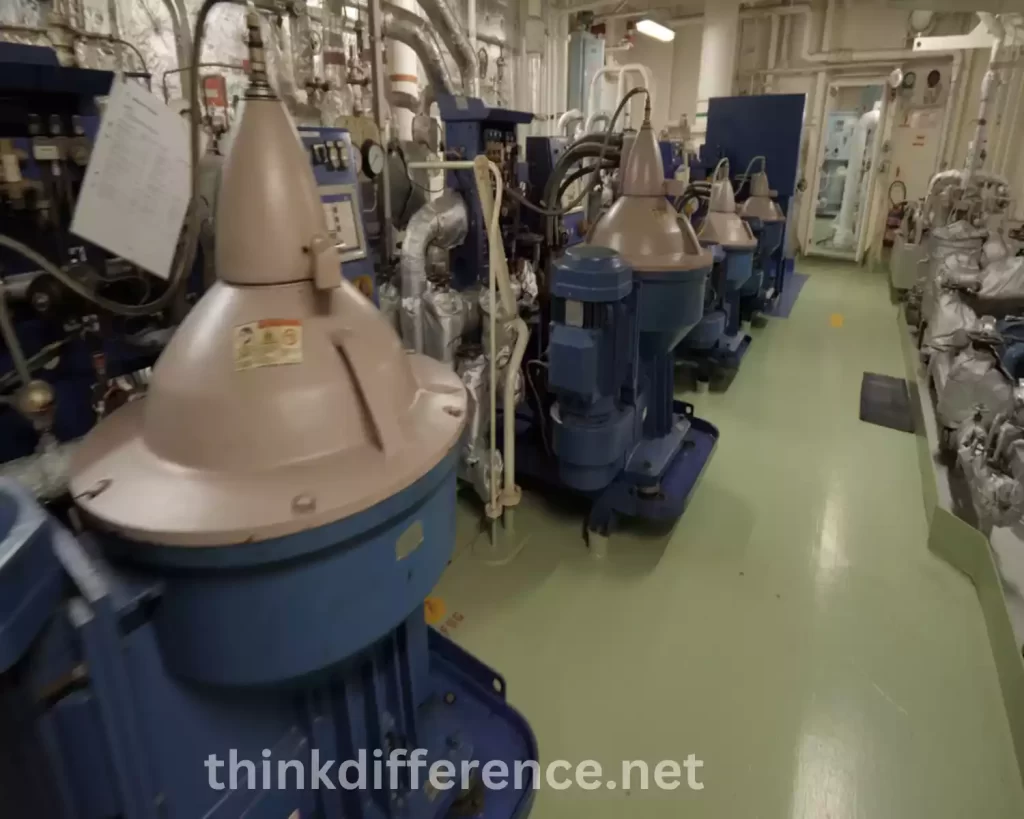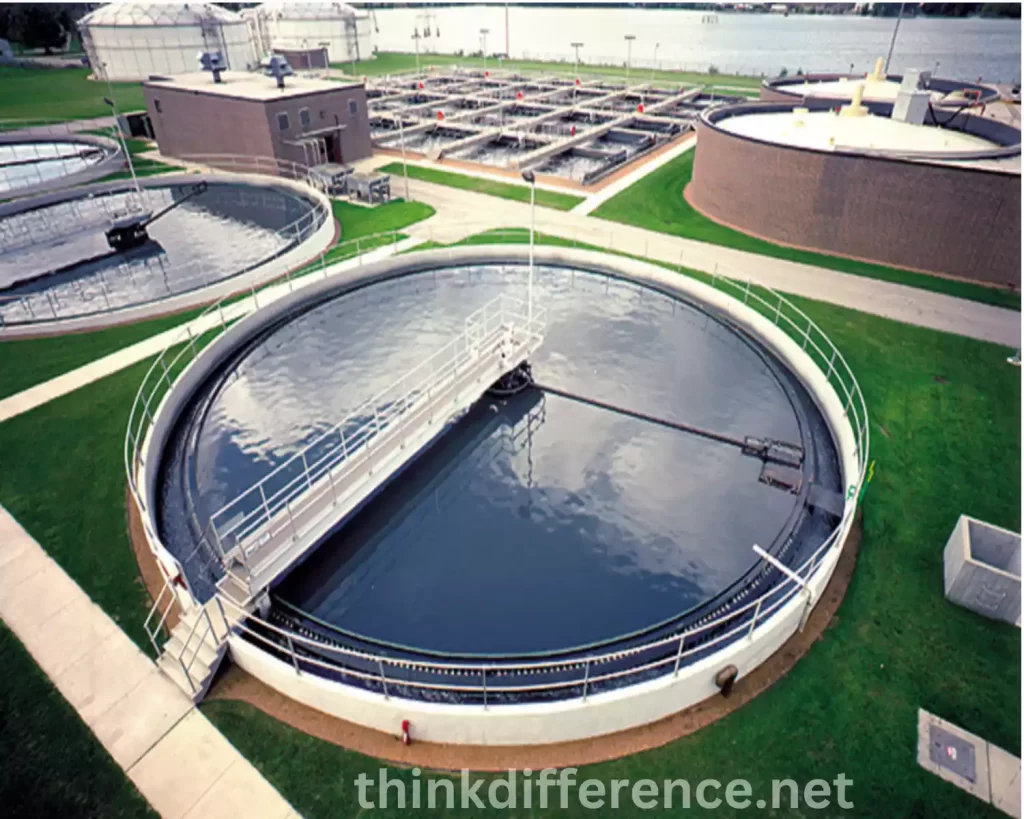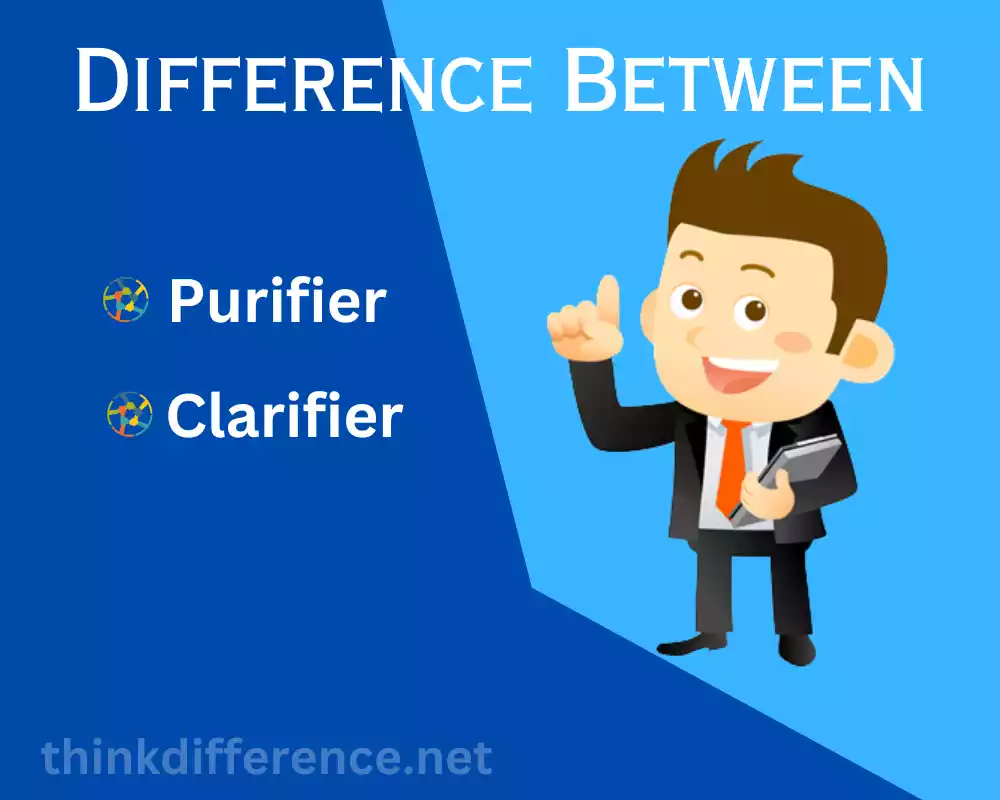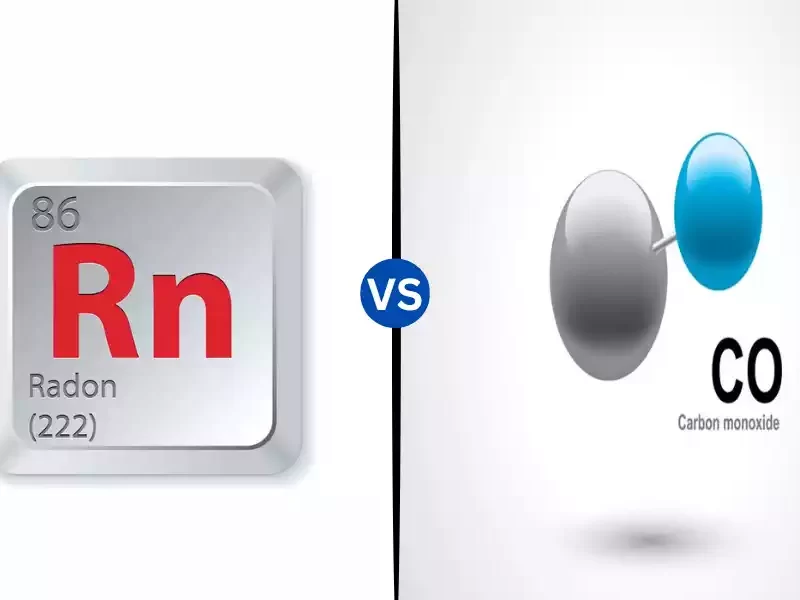Brief overview of Purifier and Clarifier
Water purifiers and clarifiers are both integral parts of water treatment systems that improve drinking water quality, but their processes differ considerably. Although their goals overlap significantly, the two techniques provide distinct results.
Purifiers:
Purifiers filter water in order to make it suitable for drinking or other uses, using various mechanisms and mechanisms of purification like filtering activated carbon or activated charcoal filters, UV disinfection systems, reverse-osmosis systems or ion exchange processes to eliminate harmful microorganisms from reaching our drinking supplies. Purifiers may even be used as drinking water treatment systems ensuring it remains free from microbes that might compromise its purity.
Clarifiers:
Clarifiers are used to separate suspended solids in water. They are most frequently employed at municipal treatment plants or industrial applications for large-scale water purification processes, and their primary use involves sediment removal from bodies of water (by sedimentation, flocculation and gravity separation processes) so cleaner water can be collected at the top. Clarifiers play an integral part in improving water clarity and decreasing turbidity.
Purifiers and Clarifiers both play an essential part in treating water, but their purposes and methods vary considerably. Purifiers remove contaminants to ensure its safety while clarifiers separate solid particles to enhance clarity. Both options depend on your desired outcome as well as potential contaminants present within your source water source and how you plan to utilize it in future use.
What is Purifiers?
Purifiers are devices and systems used to filter contaminants out of water before it’s suitable for drinking or other uses, including industrial applications. Purifiers can be found both residentially, industrially, and commercially to enhance water quality in any setting.

Purifiers offer several key features:
Types of Purifiers:
- Filtration purifiers: Filtration purifiers use physical filters like porous carbon filters or activated charcoal filters to remove impurities such as bacteria, viruses and chemicals from water, thus purifying its supply for consumption or industrial uses.
- Ultraviolet (UV) Purifiers: UV purifiers use ultraviolet light to disinfect water by deactivating harmful microorganisms such as bacteria, viruses and protozoa. UV light breaks down their DNA and stops reproduction from happening.
- Reverse Osmosis Purifiers (RO): RO purifiers use semipermeable membranes to filter impurities out of water and force water through, filtering out any contaminants such as dissolved solids or heavy metals from entering through them.
- Activated Carbon Purifiers: These purifiers employ activated carbon filters that absorb and neutralize organic compounds, chlorine and odors in water to improve both taste and aroma quality. They’re especially efficient at improving both flavor and odor!
Benefits of Purifiers:
- Removal of harmful microorganisms: Purifiers remove harmful microorganisms such as bacteria, viruses and pathogens for safe drinking water.
- Reduction of contaminants: Purifiers also significantly decrease contaminants such as heavy metals, chemicals and sediments from drinking water to make it healthier and safer.
- Taste and Smell Improvement: By eliminating unpleasant tastes and smells in water through purification processes such as activated carbon filtering, purification processes can enhance its taste and smell.
- Convenience and accessibility: Purifiers offer convenient and accessible means for obtaining clean and purified water directly from the tap or dispenser – thus cutting costs associated with purchasing bottles of water.
Examples of Purifier Applications:
- Purifying drinking water: Water purifiers can make tap or well water safe to consume and cook.
- Purification at point-of-use: Portable purifiers can also help filter water during outdoor activities, emergencies and travel – providing instantaneous refreshment at any location!
- Commercial and industrial applications: Purifiers have numerous commercial and industrial uses, from pharmaceutical manufacturing to food and beverage production and even industrial processes that rely on purified water supply.
Cost Considerations:
Purifier prices depend on their type, brand and features, with initial costs often outweighing maintenance or replacement expenses such as replacing filters or membranes and energy consumption as well as any special plumbing or installation needs.
Purifiers play an essential role in providing clean and safe drinking water that benefits communities as well as individuals alike.
What is Clarifiers?
Clarifiers (also referred to as clarifiers or clarifyers) are devices or units utilized during water treatment processes to remove suspended particles or solid particles and enhance clarity in water supplies. Clarifiers are common fixtures at both municipal water treatment plants as well as industrial facilities and wastewater treatment systems.

Offering multiple key benefits:
Types of Clarifiers:
- Sedimentation Clarifiers: Sedimentation clarifiers are among the most frequently employed types of clarifyers. Also referred to as settling tanks or sedimentation basins, gravity is used to separate suspended solids and water by forcing solid particles with higher densities down towards the bottom of the clarifier until they settle at its center and form a thick mass known as sludge; at which time water on top becomes clarified.
- Coagulation-Flocculation Clarifiers: Coagulation-Flocculation clarifiers go beyond sedimentation by using chemical processes to increase particle removal. Water treated with coagulants neutralize charges on suspended particles to form larger flocs more easily settle during sedimentation for better particle removal.
- Dissolved Air Flotation Clarifiers (DAFs): DAF clarifiers employ micron-sized air bubbles to separate particles suspended in water from its surface. When introduced into the solution, these microscopic air bubbles attach themselves to floating particles which rise to the top, where they will eventually be skimmed off before leaving only clarified water behind.
Benefits of Clarifiers:
- Clarifiers enhance water clarity: By filtering out suspended particles, sediments, and solids that create murkiness in the water.
- Reduction of Organic Matter: Clarifiers are capable of creating clearer and cleaner waters with reduced turbidity levels. They’re even equipped to eliminate bacteria, algae and other microorganisms which taint it further enhancing quality in this regard.
- Clarifiers Are Key Components in Treatment Processes: By filtering solids out, clarifiers reduce the burden on subsequent steps in treatment such as filtering or disinfection and may help avoid damage and blockages by clearing away large particles that cause blockages in pipes or drains.
- Prevention of Clogging and Damage: Consequently, clarifiers help improve efficiency by making treatment processes more cost effective.
Examples of Clarifier Applications:
- Clarifiers: Clarifiers are integral parts of water treatment plants, serving to filter out solid particles before further treatment takes place.
- Industrial Applications: Clarifiers can be found in industries as diverse as chemical production, mining, food processing and preparation to filter pollutants out of wastewater before discharging or recycling it for reuse.
- Stormwater Management: Clarifiers can remove pollutants and sediments from runoff stormwater before it enters natural bodies of water, thus protecting natural environments.
Cost Considerations:
Clarifier prices depend on factors including capacity, size, design and application needs. They typically include equipment costs like installation and maintenance as well as energy use costs; overall expenses could increase depending on complexity or whether they require chemical additives to operate efficiently.
Clarifiers play an integral part in water treatment processes. By filtering out solid particles from water and improving its quality, clarifiers help improve it for various uses including municipal supply, industrial manufacturing and environmental projects.
Differences between Purifier and Clarifier
Purifiers and clarifiers serve different roles in water treatment processes. Here are a few differences between clarifiers and purifiers:
1. Purpose:
- Purifiers: Purifiers are designed to remove contaminants and impurities from water, particularly microorganisms and chemicals that might compromise its quality for consumption or specific uses. By targeting such elements specifically, purifiers enhance water quality for safer consumption or application purposes.
- Clarifiers: Clarifiers are designed to enhance water clarity by filtering suspended and solid particles out of the water, as well as organic matter such as sediment or silt that contributes to increased turbidity levels. They remove organic material such as organic matter while simultaneously decreasing turbidity levels by filtering solid waste out.
2. Mechanisms:
- Purifiers: Purifying can be accomplished using various means such as filtration or absorption; membrane processes may also be utilized in purification systems to eliminate contaminants using physical, chemical or biological means.
- Clarifiers: Clarification relies mainly on gravity settling; clarifiers utilize sedimentation and flotation techniques to separate solid particles from water, while some use chemical additives as particle-aggregation aids.
3. Targeted Substances:
- Purifiers: Purifiers are designed to filter water and remove contaminants such as microorganisms like bacteria, viruses and protozoa as well as chemicals like pesticides and heavy metals from it, in order to meet certain quality standards for drinking or other applications.
- Clarifiers: Clarifiers are designed to remove solid particles, sediments and organic matter which contribute to turbidity in water. Their primary aim is to improve both its visual appearance and any subsequent treatment process by improving clarity.
4. Application:
- Purifiers: Purifiers can be found everywhere from homes to offices to commercial establishments – they serve the important function of making water drinkable or meeting specific production needs (i.e. food production). Portable purifiers may also come in handy during emergencies or outdoor adventures.
- Clarifiers: Clarifiers are widely employed in water treatment facilities at municipal, industrial and wastewater plants for large scale water treatments systems, to remove solid particles and sediment from stormwater or raw water before treating or discharging it for treatment or discharge.
Clarifiers and purifiers share some particle removal mechanisms, but their primary goals and mechanisms vary significantly. Clarifiers aim at increasing water clarity while decreasing turbidity by separating solids out, while purifiers prioritize eliminating microorganisms and contaminants to maintain safety standards. Purifiers or clarifiers should be chosen depending on each water treatment requirement or goal.
Similarities between Purifier and Clarifier
Purifiers and clarifiers differ significantly when it comes to their purposes and mechanisms, yet both share some similarity when it comes to water treatment.

Here are a few similarities they share in common:
- Water Treatment Systems: Clarifiers and purifiers play an integral part of any effective water treatment system, helping improve its quality by targeting specific impurities or contaminants found within it.
- Removal of Particulate Matter: Purifiers and clarifiers both remove suspended and solid particles from water, but clarifiers are more adept at targeting larger ones like sediment, silt or organic debris.
- Physical Processes: Physical Processes To remove particles from water, both purifiers (and clarifiers) rely on physical processes for purification or clarification.
- Purifiers use mechanisms such as filtration, membrane separation or adsorption to trap or block microorganisms and other contaminants present.
- Clarifiers use gravity settling or floating separation of solid particles from water for purifying purposes.
- Water Clarity Improvement: Clarifiers and purifiers both help improve water clarity by eliminating impurities from it, such as microscopic impurities that affect its quality and transparency, while clarifiers reduce turbidity by filtering larger sediment particles out, providing visually clearer water.
- Treatment Efficiency: Purifiers and Clarifiers both help improve treatment processes by decreasing burden placed upon other steps such as filtration and disinfection processes.
Although clarifiers and purifiers share similar functions and mechanisms, their primary differences lie within their primary functions and mechanisms. Clarifiers aim to remove solid particles and contaminants that hinder water clarity while purifiers focus more heavily on eliminating microorganisms that threaten its safety for consumption.
Pros and cons of Purifiers
Pros of Purifiers:
- Improved Water Quality: Purifiers enhance water quality by filtering out impurities, contaminants and microorganisms from drinking water to create safer drinking water and more suitable water for specific uses. This allows purifiers to make drinking safer as well as meeting specific purposes more readily.
- Health Benefits: Purifiers provide numerous health advantages by filtering harmful microorganisms, chemicals and pollutants out of drinking water supplies and helping protect against diseases that spread via drinking supplies as well as potential risks caused by polluted drinking supplies.
- Convenience and accessibility: Purifiers offer reliable and accessible water purification that can be delivered straight into a tap or special dispenser, eliminating the need to buy bottles of purified drinking water or boil your own.
- Enhancement of Taste and Odor: Purification techniques such as activated charcoal filtration can enhance both taste and smell in water by filtering out chlorine, organic compounds or any contaminants such as lead that may exist in it.
- Versatility: Purifiers come in all sizes and types to meet different water sources and needs. Residential, commercial or outdoor settings all can utilize purifiers as effective water treatments solutions.
Cons of Purifiers:
- Initial Cost: Purifiers with advanced features or higher prices may be difficult to purchase due to their increased prices, especially those that cost more. Maintenance fees, filter replacement expenses or energy consumption charges could add further expenses depending on which model is chosen.
- Energy Consumption: Water purifiers that utilize reverse osmosis or UV disinfection may require electricity for operation, increasing their energy usage and consequently their electricity bill.
- Waste Generation: Reverse Osmosis can produce waste products such as brine or wastewater that needs proper disposal or treatment methods to properly address. Without such measures in place, the consequences could become very costly indeed.
- Limited Effectiveness for Certain Contaminants: While purifiers are great at eliminating impurities and bacteria from water supplies, certain contaminating agents require special consideration and attention.
- Maintenance and Replacement: Purifiers require regular upkeep, including replacement of filters or membranes as required, in order to operate optimally and achieve their maximum potential. Without adequate care or replacement parts being made available when required, performance could suffer significantly and cause costly downtime and compromise in performance.
Before choosing a water purifier, take note of these pros and cons. Take into consideration your budget, maintenance needs, as well as concerns you have over water quality.
Pros and cons of Clarifiers
Pros of Clarifiers:
- Improved Water Clarity: Clarifiers improve water clarity by filtering out solid particles such as sediments, organic matter and silt to create visually cleaner and more attractive water.
- Enhanced Efficiency of Treatment Processes: By filtering out solids, clarifiers can decrease workload on subsequent steps of treatment such as filtering or disinfection – increasing overall efficiency and effectiveness.
- Prevention of Equipment Damage: Clarifiers can significantly decrease the chances of equipment damage or clogging by filtering contaminated fluids out.
- Compliance with Water Quality Standards: Clarifiers are essential in meeting water quality standards and regulations. By effectively extracting suspended solids from water treatment systems, clarifiers help to ensure full compliance.
- Versatility: Clarifiers are highly versatile devices and can be found in municipal water treatment systems, industrial facilities, stormwater management systems and stormwater drainage management systems, to meet various water sources’ needs and fulfill different capacities.
Cons of Clarifiers:
- Limited Contaminant Removal: Clarifiers have limited ability to remove contaminants. While they are extremely efficient at extracting sediments and solid particles from water sources, their efficacy may be limited in dealing with chemicals, microorganisms or other dissolved pollutants.
- Footprint and Space Requirements: Clarifiers require significant space due to their size and design; this can present difficulties when retrofitting existing treatment systems or in areas with limited floorspace.
- Chemical Additives: Certain clarifiers require additional chemicals like coagulants in order to aid particle aggregation, creating more complexity for treatment processes while demanding close oversight on dosed amounts of the chemicals used in treatment.
- Maintenance and Cleaning: Clarifiers require regular care and cleaning in order to operate at peak performance, including clearing away built-up solids as well as monitoring for changes in sludge levels. To maintain optimal operation, regular servicing and inspection must occur – this involves both clearing away of solid accumulation as well as checking on levels.
- Cost Considerations: Clarifiers can be costly to install, run and maintain depending on their size, complexity or requirements. Their costs can also depend on energy use, maintenance expenses and equipment purchases that might impact them negatively.
These benefits and drawbacks of clarifiers will enable you to assess their suitability for various water treatment applications. Before purchasing and installing one, it’s crucial that you consider goals regarding quality water, available space, budget constraints and ongoing maintenance needs before selecting and installing an individual clarifier system.
Conclusion
Purifiers and Clarifiers are invaluable components of water treatment systems, ensuring the availability of clean and safe water for various applications. By investing in these technologies and addressing common misconceptions about water treatment, we can all contribute to a healthier and more sustainable future.



